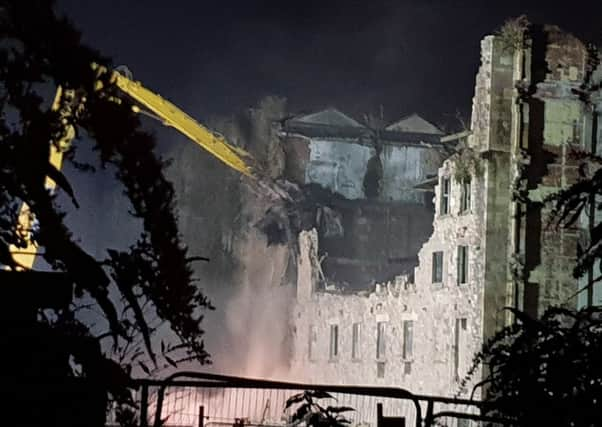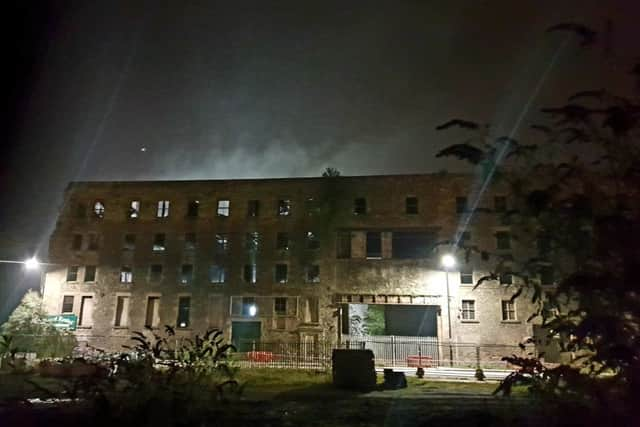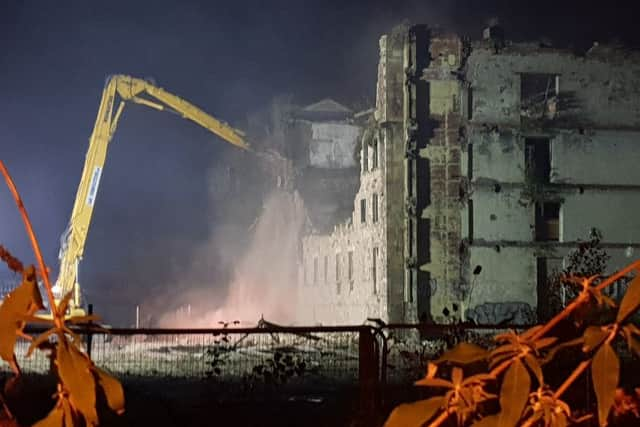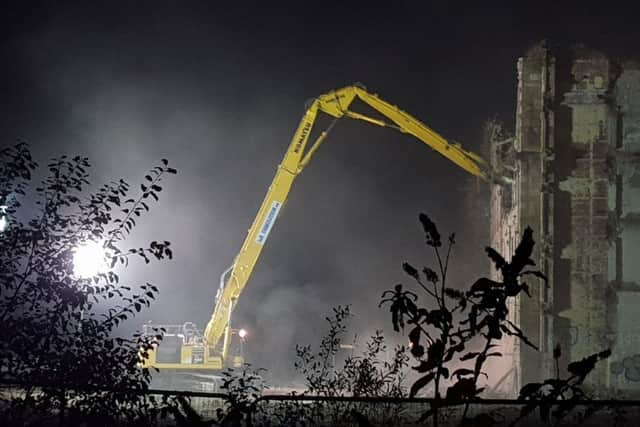Lancaster historic mill once owned by Lord Ashton is demolished in middle of night


Lancaster and District Heritage Group (LDHG) said they were “naturally saddened and disappointed” that St George’s Mill - the last standing part of the Williamson linoleum empire - is being knocked down.
A new development of 419 student flats with commercial development in St George’s Quay will take its place.


Advertisement
Hide AdAdvertisement
Hide AdAs part of the initial plans for a new student village, the mill was to be kept and incorporated into the development, but the plans were changed and resubmitted in 2016.
Since then, members of LDHG have been researching the history of the building and the part it played in the business empire of James Williamson, also known as Lord Ashton.
As a commemoration of the building’s history the group produced a booklet called St George’s Works Mill, A Landmark of Lancaster’s Industrial Past.
The group said they felt that they had compiled a strong enough case to submit an application to have the facade of the building listed by Historic England. But this application and a subsequent appeal to the Department for Culture, Media and Sport were rejected.


Advertisement
Hide AdAdvertisement
Hide AdOver the past year a joint initiative between LDHG and the Lancaster Civic Society was undertaken to try and present alternatives to the demolition of the building, but these approaches also proved unsuccessful.
Demolition work started on the building overnight on Monday November 5, and continued on Tuesday and Wednesday evenings.
Some city residents have supported the demolition of the building however, mainly due to its poor condition.
LDHG said in a statement: “LDHG will with other interested groups and individuals continue to campaign for the preservation of the city’s heritage and to this end plans are being drawn up for the group in partnership with others to identify buildings that are potentially at risk, identify the nature of that risk, research the building and compile a localised “at risk” register.


Advertisement
Hide AdAdvertisement
Hide Ad“This will allow us at a far earlier stage to build cases where our heritage assets are threatened.
“LDHG would welcome the involvement of individual Lancaster residents, and other local groups, in this project.
“LDHG would like to publicly thank Lancaster Civic Society, Lancaster Guardian and the hundreds of Lancaster residents who have expressed their support for our endeavours.”